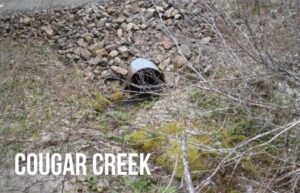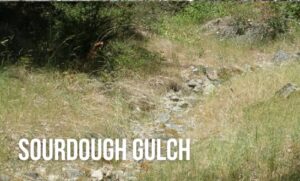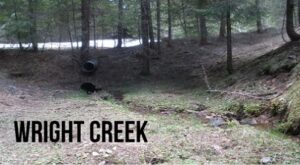 Overstocked federal forests are fueling massive catastrophic wildfires like the Labor Day fires that burned over 1 million acres in Oregon. Despite the clear need to thin these forests to reduce wildfire risks, Oregon’s senators want to further restrict federal forest thinning and fuels reduction across 3 million acres in Oregon.
Overstocked federal forests are fueling massive catastrophic wildfires like the Labor Day fires that burned over 1 million acres in Oregon. Despite the clear need to thin these forests to reduce wildfire risks, Oregon’s senators want to further restrict federal forest thinning and fuels reduction across 3 million acres in Oregon.
Oregon’s senators have proposed S. 192 — a bill in Congress to add 4,700 miles of “rivers” to the National Wild and Scenic Rivers System. Why does this matter, and how does it affect you?
Only 15 percent of the proposed segments are actually rivers. Most are small streams, gulches and unnamed tributaries including those pictured here. If this bill passes, forest management, firefighting and access will become more difficult on an estimated 3 million acres of federal lands in Oregon included in the “buffers” mandated by the legislation.
 Please urge your county commissioners to weigh in and formally oppose S. 192. Their voice is essential to ensuring Oregonians’ voices are heard by officials in Washington, DC, especially those of us living in rural communities. Your commissioners’ contact information can be found here.
Please urge your county commissioners to weigh in and formally oppose S. 192. Their voice is essential to ensuring Oregonians’ voices are heard by officials in Washington, DC, especially those of us living in rural communities. Your commissioners’ contact information can be found here.
The Wild and Scenic Rivers Act of 1968 was enacted to preserve certain rivers with “outstanding natural, cultural, and recreational values in a free-flowing condition.”
However, according to a list provided by Oregon’s senators, of the 886 segments proposed for inclusion in S. 192, 752 are identified as streams, rather than rivers. Additionally, there are 33 segments identified as “gulches” and one “draw.” And finally, there are 17 segments that have not been named and are listed as “unnamed tributary.”
 No official maps have been provided by the Senators or federal land management agencies to allow Oregonians to determine how their communities would be affected by the proposal.
No official maps have been provided by the Senators or federal land management agencies to allow Oregonians to determine how their communities would be affected by the proposal.
S. 192 adds additional regulations to three million acres of federal lands. It restricts thinning and other restoration activities and ties the hands of land managers who are already facing a dangerous wildfire season this year.
Please urge your county commissioners to send an important message by opposing S. 192. You can copy and paste this sample message, and send it to your local county commissioner. You can find their contact information here.
Dear Commissioner,
I am writing to urge you to weigh in and oppose S. 192, a bill to add 4,700 miles of Oregon rivers, streams, gulches and draws to the National Wild and Scenic Rivers System.
If this bill passes, forest management, firefighting and access will become more difficult on an estimated 3 million acres of federal lands in Oregon included within the large “buffers” mandated by the legislation.
The Wild and Scenic Rivers Act of 1968 was enacted to preserve certain rivers with “outstanding natural, cultural, and recreational values in a free-flowing condition.” However, according to a list provided by Oregon’s senators, of the 886 segments proposed for inclusion in S. 192, 752 are identified as streams, rather than rivers. Additionally, there are 33 segments identified as “gulches” and one “draw.” And finally, there are 17 segments that have not been named and are listed as “unnamed tributary.”
That leaves only 15 percent of the segments proposed as Wild and Scenic that are actually classified as rivers. No official maps have been provided by the Senators or federal land management agencies to allow us to determine how our communities would be affected by the proposal or the current fuel loading in these buffer areas.
While some Oregon rivers are truly “Wild & Scenic,” S. 192 adds additional regulations to millions of acres of federal lands, restricting responsible forest thinning treatments and tying the hands of land managers who are already facing a dangerous wildfire season this year.
The legislation received a committee hearing on June 23 — the first step towards its passage. Please send an important message by formally opposing S. 192. Urge the federal government to address the real threat of catastrophic wildfires to Oregon’s forests, watersheds, rivers.



